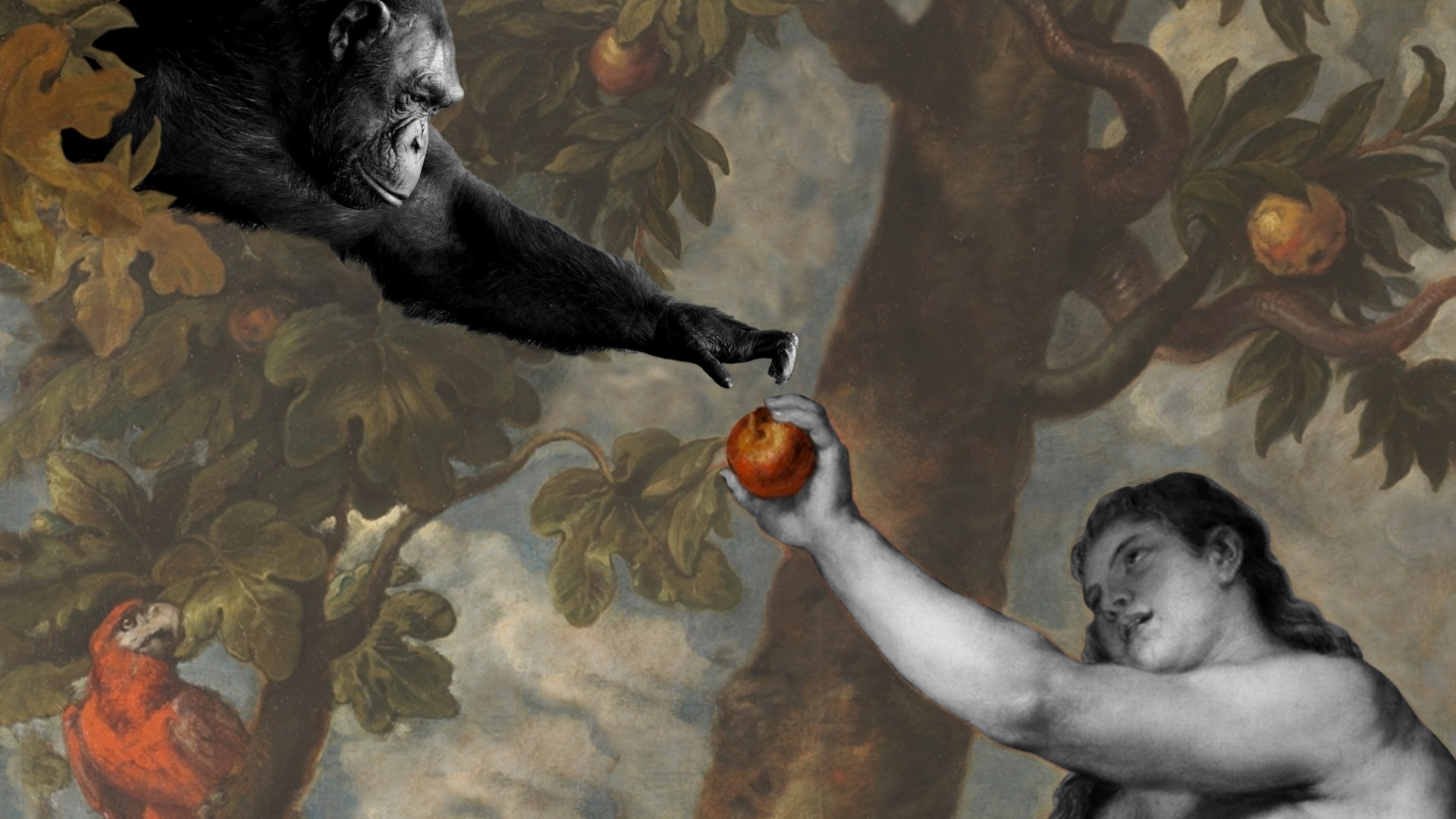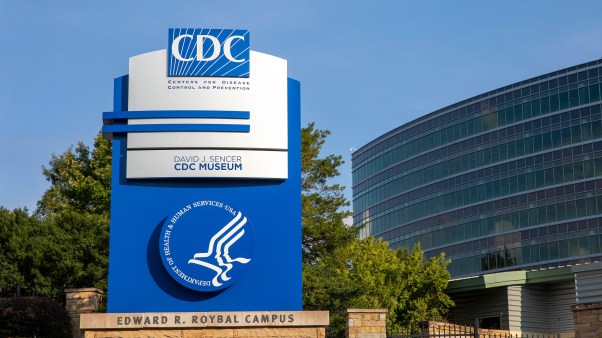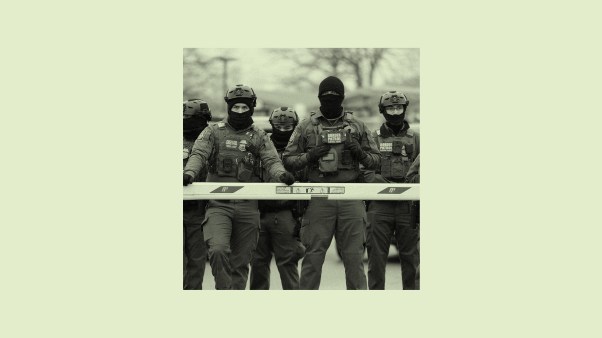The past few years haven’t been kind to evangelicalism. Every other month a new scandal or controversy seems to appear. Sexual and spiritual abuse. Patriarchy and toxic masculinity. Critical race theory and racism. The list goes on. Following in the wake of these self-inflicted wounds, deconstruction and exvangelical have become buzzwords in Christian discourse. No one should be surprised.
Given the circumstances, it seems almost quaint to revisit questions of evolution, original sin, and the historical Adam and Eve. How do these decades-old theological controversies bear upon our present predicament? The answer is simple. Despite appearances, the phenomenon of deconstruction isn’t new, and the story researcher David Kinnaman told in his 2011 book, You Lost Me: Why Young Christians Are Leaving Church … and Rethinking Faith, still rings true. Younger people have been leaving the faith in increasing numbers for decades, and one of the main reasons is the perceived anti-science mindset of the church.
The anti-mask, anti-vaccine stance of far too many conservative pastors and pundits added fuel to the fire, but the evangelical problem with science ultimately comes down to resistance to “secular” evolutionary science, which is set in opposition to the biblical narrative. Of course, all evangelical Christians feel a duty to be faithful to Scripture, but is it possible leave room for evolution and remain faithful to the inspiration, authority, and inerrancy of God’s Word?
The issues in play
In his book When Did Sin Begin? Human Evolution and the Doctrine of Original Sin, Calvin University physics professor Loren Haarsma outlines various evangelical proposals for harmonizing human evolution and original sin. Drawing from a dozen recent books on the subject, Haarsma runs through the four main options:
- God selected Adam and Eve from an existing population to represent all of humanity. Since they represented everyone, the consequences of their failure immediately affected everyone.
- God selected Adam and Eve from an existing population to represent humanity, but after being expelled from the Garden, their sinfulness was spread to others by culture or genealogy.
- Adam and Eve aren’t literal individuals. Rather, Genesis 2–3 is a stylized retelling of many human events compressed into a single archetypal story. Although God occasionally revealed his will to individuals or groups, people persisted in disobedience.
- Adam and Eve are symbolic figures in an archetypal story. Over a long period of time, humans became morally accountable through general revelation (Rom. 1:18–20), yet they chose sin.
Haarsma, the husband of BioLogos president Deborah Haarsma, has been involved in faith-and-science dialogues for decades, and his expertise shows throughout. The sort of “harmony” Haarsma seeks isn’t a one-to-one correspondence between the details of Scripture and science. Instead, he advocates “a harmony reminiscent of J. S. Bach’s counterpoint,” which employs two melodies played simultaneously. Each can be enjoyed independently, but “played together, they form a richer whole.”
Before discussing the strengths and weaknesses of each view, Haarsma spends the first half of the book reviewing the theological and scientific issues that come into play: scriptural interpretation, divine action, natural evils, and human evolution. The opening chapter covers principles of biblical interpretation, invoking John Calvin’s well-known principle of divine accommodation—how God, knowing our limitations, speaks to us in something resembling “baby talk”—to explain the “ancient science” in the Bible. Haarsma concludes that science doesn’t dictate interpretation, but “scientific discoveries are one of several ways that the Holy Spirit has prompted the church to reinterpret specific passages.”
On divine action, Haarsma focuses on addressing the common objection that many aspects of evolution rely on random processes, which nonspecialists characterize as “without purpose” or “meaningless.” When scientists use the term “random,” however, they simply mean “unpredictable” from a human standpoint, which doesn’t rule out God’s purposes or control of the processes.
Similarly, his discussion of natural evil addresses the common misconception that animal suffering and death are consequences of human sin and the Fall. Although there is “abundant scientific evidence,” he writes, that “death was a natural part of both animal and plant existence from the beginning,” Haarsma turns also to Genesis, Job, and Romans 8 to make his case, helpfully ending with a word of pastoral advice that in Christ, “God gave us the mandate to ease the suffering of others.”
The chapter on human evolution begins with a review of the genetic and fossil evidence for common ancestry, particularly the fact that species start from a population, not a single pair. Haarsma points out that the early sapiens population was geographically spread out and never very large, but he stumbles a bit on a population bottleneck between 100,000–200,000 years ago. Recent research has ruled that out, but it’s a minor flaw in an otherwise good discussion.
From there, the chapter shines in its treatment of human sociality and gene-culture coevolution. The terms may be unfamiliar, but the concept isn’t hard to understand. Coevolution simply involves a “feedback loop” between genetic and cultural change. For example, the genetic changes that led to larger brains also required more calories to feed and more time to learn and mature. Human survival techniques and social structures had to adapt as a result. As Haarsma explains, “Each generation inherited both genes and cultural practices from their ancestors, and both were important for survival and reproduction.”
This chapter is practically required reading for those unfamiliar with recent developments in evolutionary thought. Briefly, animals exhibit behaviors that we would label “naughty” or “nice,” writes Haarsma, but “humans do much more than this. Humans develop moral codes to regulate and improve behavior and transmit these codes through actions and words.” Animals have learned “rules” of behavior, and they have methods of communication, but they lack language, which is necessary for truly human morality.
Appropriately, the chapter on human evolution marks a turning point in the book. Going forward, Haarsma poses pointed theological questions about the soul, the image of God, Adam and Eve in Scripture, the historical doctrine of original sin, the definition of sin, and so on. He considers the answers posited by the four main evangelical schools of thought, and he weighs the pros and cons of each in their attempts to reconcile Scripture and scientific evidence.
This approach is both a strength and a weakness. I greatly appreciate the fact that Haarsma asks the right questions without coming down on one side or the other. Unlike most who write about these subjects, including myself, he doesn’t express a preference, instead challenging his readers to consider the options and choose for themselves. The downside isn’t a weakness in his evidence or reasoning; it’s purely stylistic. The format lends itself to a certain repetitiveness, but perhaps that was unavoidable. I found it an occasional distraction, but no more than a fly bumping against a windowpane.
Keeping Jesus in view
I’ll forego a detailed critique of the rest of the book, respecting Haarsma’s decision not to provide answers, but I do have a few nits to pick and highlights to hit.
Early on, I was concerned by several references to sin as “a violation of God’s revealed will.” This shorthand definition is problematic. First, it requires special revelation from God, which would mostly rule out the fourth scenario—that over a long period of time humans became morally accountable and chose sin. Second, it implies that people who are unaware of God’s will (for instance, those who “never heard”) could not sin. That said, Haarsma’s chapter on sin did more than allay my fears—it was worth the price of admission on its own. In particular, Haarsma’s treatment of Romans 2 and general revelation was handled beautifully.
Although I understand it as a marriage of convenience, I also didn’t care for genealogy and culture being lumped together as possible mechanisms for the transmission of sin. No one has offered a clear mechanism for the transfer of sinfulness along genealogical lines. Simply asserting the possibility isn’t an explanation. Lines on a family tree don’t make a person a sinner. On the other hand, the method of cultural transfer is obvious. The fruit eaten in the Garden was from the Tree of the Knowledge of Good and Evil. Knowledge is learned, not inherited in the genes or by genealogy. Passing down knowledge from one generation to the next is virtually the definition of “culture.” It’s hard to equate those two very different explanations.
Fittingly, the book ends on another high note: “God’s Answer Is Still Christ.” A common complaint of those who build Noah’s Ark theme parks is that an evolutionary view of creation removes the need for Christ’s atonement. As Haarsma thoroughly demonstrates, that charge is not true. Across the spectrum of evangelical interpreters who accept the science of evolution, none denies the need for Christ’s atonement. To his credit, Haarsma keeps Jesus in view throughout the book. I appreciated that even more than his even-handed treatment of the various options for understanding Adam and Eve.
A 2017 Gallup poll showed that, for the first time, there were as many people who believed in God-guided evolution as people who believed that humanity began with two people named Adam and Eve. Including the minority (19%) who deny God’s involvement in human evolution, most Americans (57%) accept the scientific evidence. If a concern for evangelism is still one of the hallmarks of evangelicalism, pastors and lay leaders especially need to stop drawing needless lines in the sand on evolution and the interpretation of early Genesis. It only pushes people away from Christ.
If anyone has serious questions whether a person can believe both Jesus and evolution, I recommend Haarsma’s book. The problem isn’t a lack of faithful options. If anything, there are too many.
Jay Johnson has written about evolution, original sin, and Adam and Eve for Canadian-American Theological Review, BioLogos, the Lutheran Coalition for Faith, Science & Technology, and God and Nature magazine. His website is becomingadam.com.










